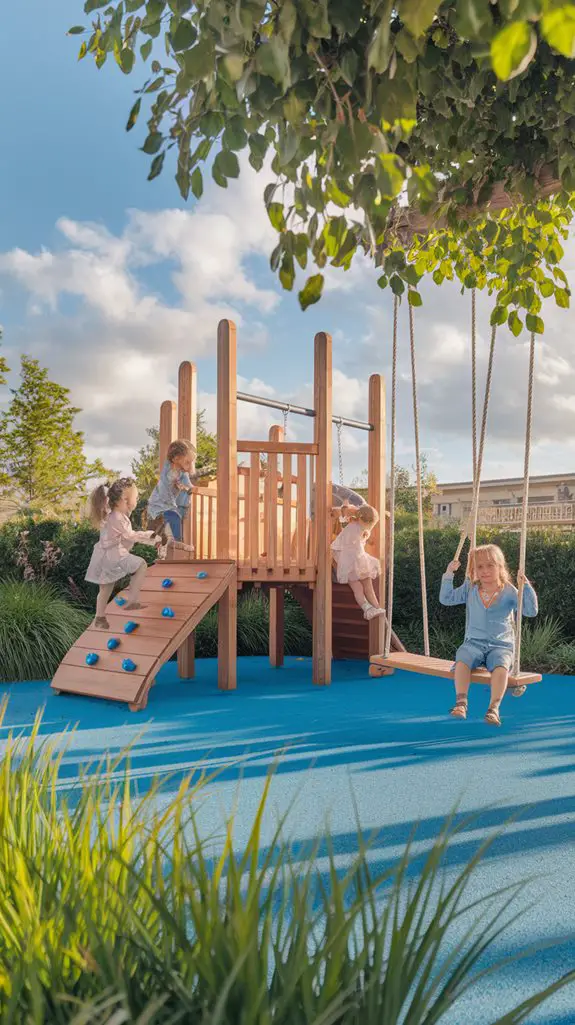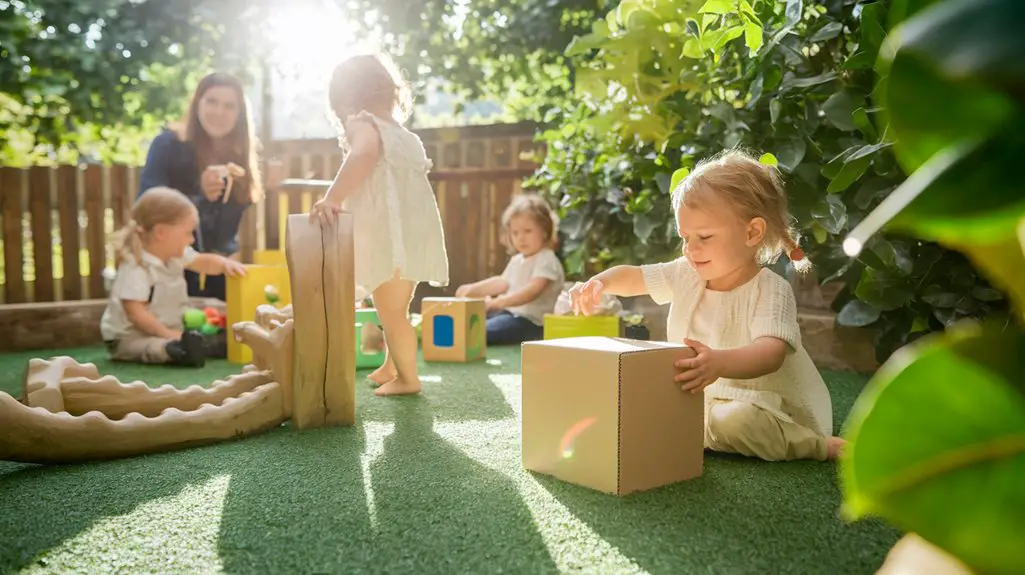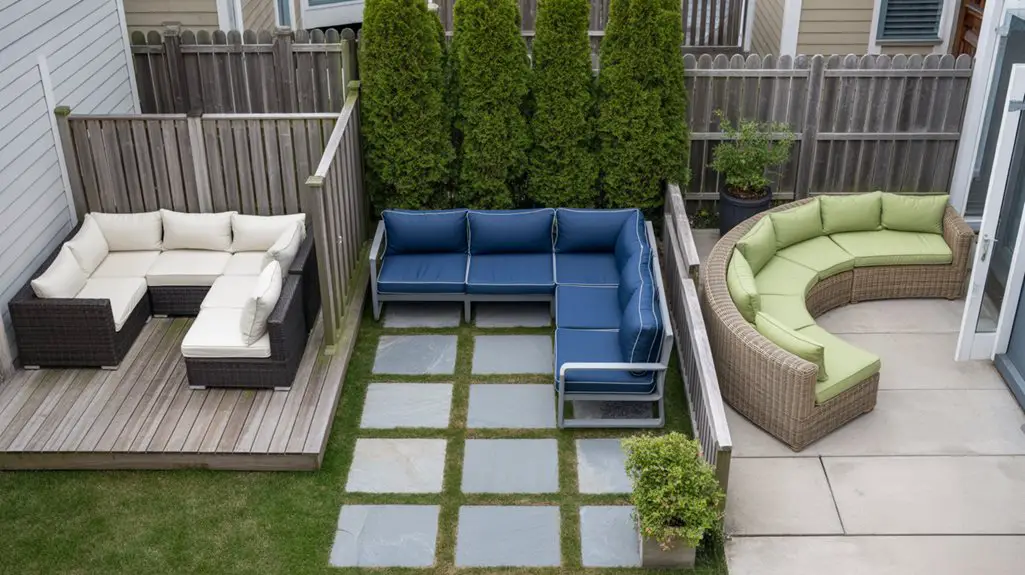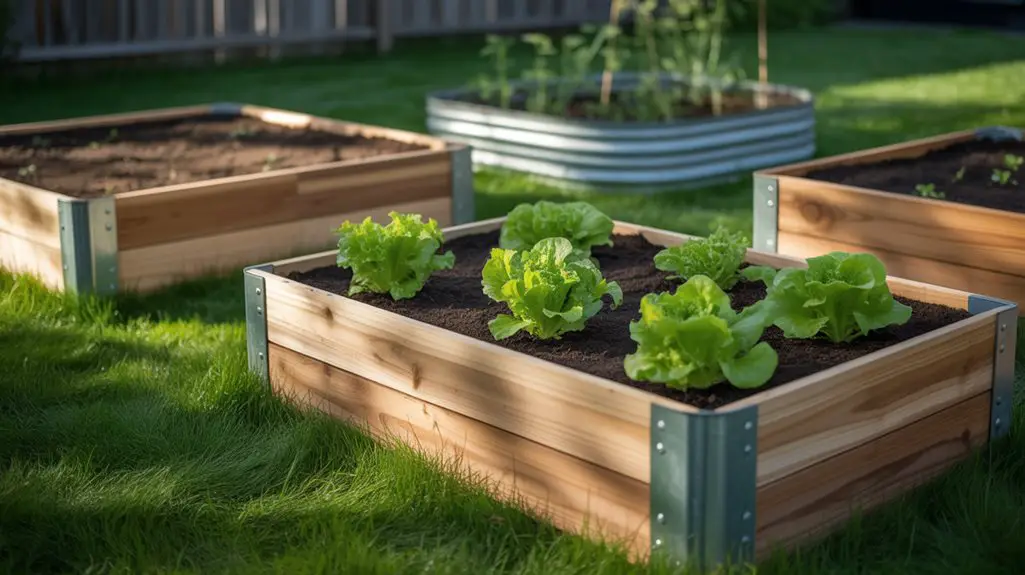When you create a play space for children, the materials you choose matter more than you might think. Traditional playground components often contain hidden toxins that can harm developing bodies through skin contact, inhalation, or accidental ingestion. Your little ones spend hours touching, climbing, and exploring these areas with their natural curiosity. While bright colors and durability might catch your eye first, the invisible chemical profile of each material will ultimately determine how safe that play environment truly is.
Health Risks of Traditional Play Area Materials
While traditional play area materials have been widely used for decades, they often contain chemicals that pose significant health risks to children.
Pressure-treated wood contains arsenic, chromium, and copper that can leach into soil and transfer to skin.
Rubber mulch, made from recycled tires, releases VOCs and contains heavy metals like lead and cadmium.
Many plastic play structures contain phthalates, BPA, and flame retardants—endocrine disruptors linked to developmental issues.
These chemicals enter children’s bodies through skin contact, hand-to-mouth behavior, and inhalation of dust particles.
You’ll find these toxins particularly concerning because children’s developing systems are more vulnerable to chemical exposure than adults’.
Their higher respiratory rates, thinner skin, and frequent ground contact increase absorption of these harmful substances. Additionally, using natural pest control in surrounding areas can help reduce the overall chemical exposure to children playing nearby.
Environmental Benefits of Non-Toxic Alternatives

Beyond protecting children’s health, non-toxic play area materials offer substantial environmental benefits throughout their lifecycle.
When you choose natural wood, cork, or recycled rubber, you’re reducing reliance on petroleum-based products that release greenhouse gases during manufacturing.
These eco-friendly alternatives typically require less energy to produce and often come from renewable or reclaimed sources. Many biodegrade naturally at end-of-life or can be completely recycled, minimizing landfill waste.
Unlike traditional materials containing PVC or treated wood, non-toxic options don’t leach harmful chemicals into soil or groundwater.
You’ll also find that many manufacturers of non-toxic play materials emphasize sustainable forestry practices and efficient production methods, further reducing their carbon footprint and preserving natural resources for future generations. Additionally, using native plants for wildlife habitats can enhance local biodiversity and contribute to a healthier ecosystem.
Top Non-Toxic Materials for Safe Play Spaces

Several exceptional non-toxic materials stand ready to transform your child’s play area into a safe, healthy environment.
Choose untreated hardwoods like maple or oak for climbing structures and furniture, as they’re naturally durable without chemical preservatives.
Cork offers excellent cushioning for floors with antimicrobial properties and no off-gassing concerns.
For outdoor spaces, consider EWF (Engineered Wood Fiber) or pea gravel, both tested for impact absorption and free from harmful additives.
Natural rubber, not synthetic varieties containing phthalates, provides excellent durability for surfacing with superior bounce-back properties.
When selecting fabrics, opt for organic cotton, hemp, or wool that haven’t been treated with flame retardants or stain repellents.
These materials won’t leach toxins into the environment or onto your child’s skin during play. Additionally, using pet-safe ground cover can enhance the overall safety of your play area while ensuring a healthy environment for pets and children alike.
Creating a Chemical-Free Sensory Play Zone
Sensory play zones thrive when built from natural, chemical-free materials that engage children’s developing senses without introducing harmful toxins. When crafting these zones, you’ll want to prioritize materials that stimulate multiple senses while maintaining strict safety standards. Additionally, using backyard enclosures for pets can help create a safe environment for both children and pets to explore and play together.
| Material | Sensory Benefits | Safety Features |
|---|---|---|
| Untreated Wood | Texture, warmth, scent | Splinter-free, no VOCs |
| Organic Cotton | Softness, malleability | No pesticide residue |
| Natural Clay | Temperature response, moldability | Non-toxic, no additives |
| River Stones | Weight, temperature variation | Smooth edges, washable |
| Beeswax | Scent, pliability | Non-allergenic, biodegradable |
Select materials that can be easily sanitized without harsh chemicals. You’ll find that natural materials often provide richer sensory experiences while eliminating exposure to phthalates, formaldehyde, and flame retardants commonly found in synthetic alternatives.
Maintaining Your Non-Toxic Play Area Over Time
While creating a non-toxic play area requires careful initial planning, maintaining its safety standards demands ongoing vigilance and regular care routines.
Establish a monthly inspection schedule to check for material degradation, splinters in wooden items, or paint chipping that could expose harmful substances.
Clean surfaces weekly with non-toxic solutions—vinegar and water mixtures effectively disinfect without introducing chemicals.
For wooden components, use food-grade mineral oil rather than petroleum-based sealants when refinishing becomes necessary.
Replace worn materials promptly, as deteriorated items may release previously encapsulated toxins.
Keep detailed records of all play items, including manufacture dates and material composition for quick reference during safety assessments.
Remember that environmental factors like sun exposure and moisture can accelerate material breakdown, necessitating more frequent checks in outdoor play zones. Additionally, backyard wildlife can assist in maintaining a natural balance that reduces pest infestations without harmful chemicals.
Budget-Friendly Eco-Safe Play Solutions
Creating a non-toxic play environment doesn’t necessarily require expensive specialty products or premium materials. You’ll find many affordable alternatives that prioritize both children’s safety and environmental sustainability.
| Material | Cost | Environmental Impact |
|---|---|---|
| Reclaimed wood | Low-medium | Minimal; prevents waste |
| Natural fiber rope | Low | Biodegradable; renewable |
| Beeswax-finished products | Medium | Non-toxic; sustainable |
Consider community resource sharing—tool libraries and toy exchanges can greatly reduce costs. DIY solutions like homemade playdough using flour, salt, and natural colorants offer safe alternatives to commercial products. Local agricultural byproducts such as straw bales, cotton, and wool can transform into imaginative play elements at minimal expense while supporting regional economies and reducing carbon footprints. Additionally, incorporating sustainable backyard designs can further enhance your outdoor space while being mindful of your pets’ needs.
Conclusion
Your choice of non-toxic materials for play areas isn’t just a drop in the bucket—it’s a critical investment in your child’s health. By eliminating harmful chemicals, you’re protecting developing bodies from exposure while nurturing our environment. Remember, maintaining these safe spaces requires consistent attention to material degradation. Even with budget constraints, you’ll find eco-friendly alternatives that don’t compromise on safety, ensuring your children thrive in chemical-free environments.




